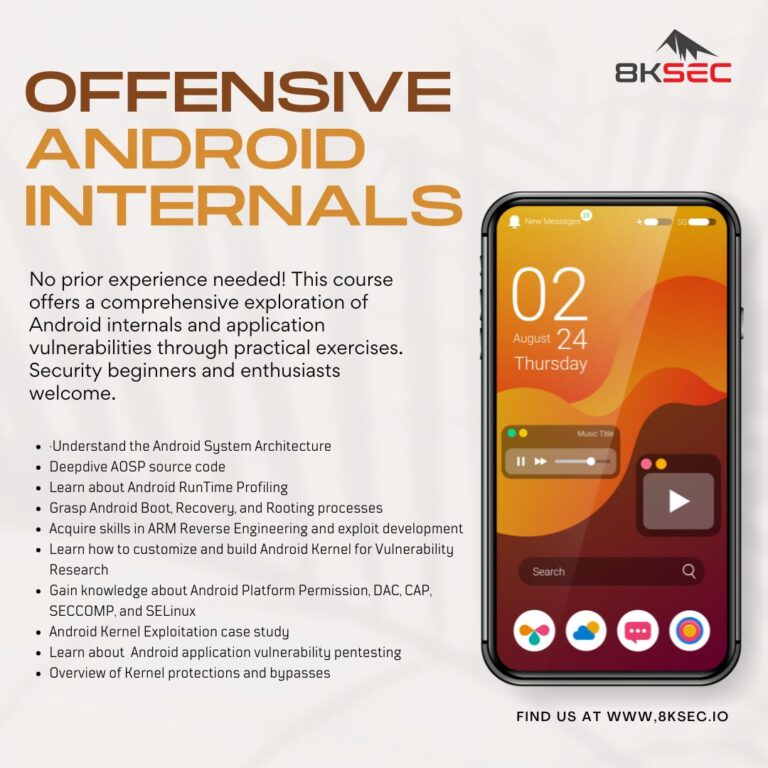Hacking Android Games

Greetings and welcome to our blog post on the topic of Android game hacking. Today, we aim to provide you with an overview of the process involved in hacking Android games. It’s crucial to distinguish between app hacking and game hacking within the Android ecosystem.
How to Secure Flutter Applications Against the OWASP Mobile Top 10 for 2024

Introduction Building secure mobile apps requires more than just a powerful framework like Flutter. It demands a proactive approach to mitigating ever-evolving threats. In this blog, we’ll explore various techniques and best practices for securing a Flutter application using the recently released OWASP Mobile Top 10 2024 list. We will be looking into crucial areas […]
ipsw Walkthrough Part 2 – The Swiss Army Knife for iOS & MacOS security research

In the first part of this series, we went over the most of ipsw commands and today we will continue with the rest of them. We will see how to work with kernelcache, img4, how to interact with the USB connected device and more. extract <p>We will start with the <code>ipsw extract</code> command which allows […]
ipsw Walkthrough Part 1 – The Swiss Army Knife for iOS/MacOS security research

In this first blog post about ipsw tool we will see its basic uses and how it can make our life a lot easier. ipsw is a tool that can be used for *OS research, it provides a lot of functionalities related to dyld_shared_cache, DeviceTree, kernelcache, Img4, etc. which are all of interest to security […]
Android SELinux Internals Part I | 8kSec Blogs

This is part I of a 2 part series on Android SELinux Internals where we will do a deepdive into the world of SELinux on Android and understand its inner workings, along with its functionalities and benefits. We’ll discuss how SELinux provides security on Android devices and ways to bypass it. This is going to […]
iOS Deep Link attacks Part 2 – Exploitation | 8kSec Blogs

In Part 2 of this series on iOS Deep Link attacks, we will explore how to identify different vulnerabilities on iOS Deep Link and the technical demonstration to exploit them. If you haven’t yet checked out Part 1, you can view it here. Agenda In this blog we will cover the deep link vulnerabilities as […]
iOS Deep Link Attacks Part 1 – Introduction | 8kSec Blogs

Introduction In Part 1 of this series on iOS Deep link attacks, we will explore how to recognize various types of deep link schemas used in iOS apps and identify potential vulnerabilities associated with them. The focus of this part will be to describe the different types of schemas and explain methods for identifying them. […]
Android Deep Link issues and WebView Exploitation | 8kSec Blogs

Over the last few years, Android smartphones have become ubiquitous. We have millions of users relying on these devices for business and personal communication, entertainment, and work. With this rise in the use of Android smartphones, there has been a high uptick in the number of security vulnerabilities in the applications that can put users’ […]
The Application of Reinforcement Learning in Cyber Security | 8kSec Blogs

At 8ksec, we are dedicated to developing cutting-edge security technologies that help our clients protect their critical assets. One of the areas we are focused on is the development of a next-generation vulnerability scanning tool. Vulnerability scanning tools have been around for many years, but despite their widespread use, they still have some limitations. For […]











